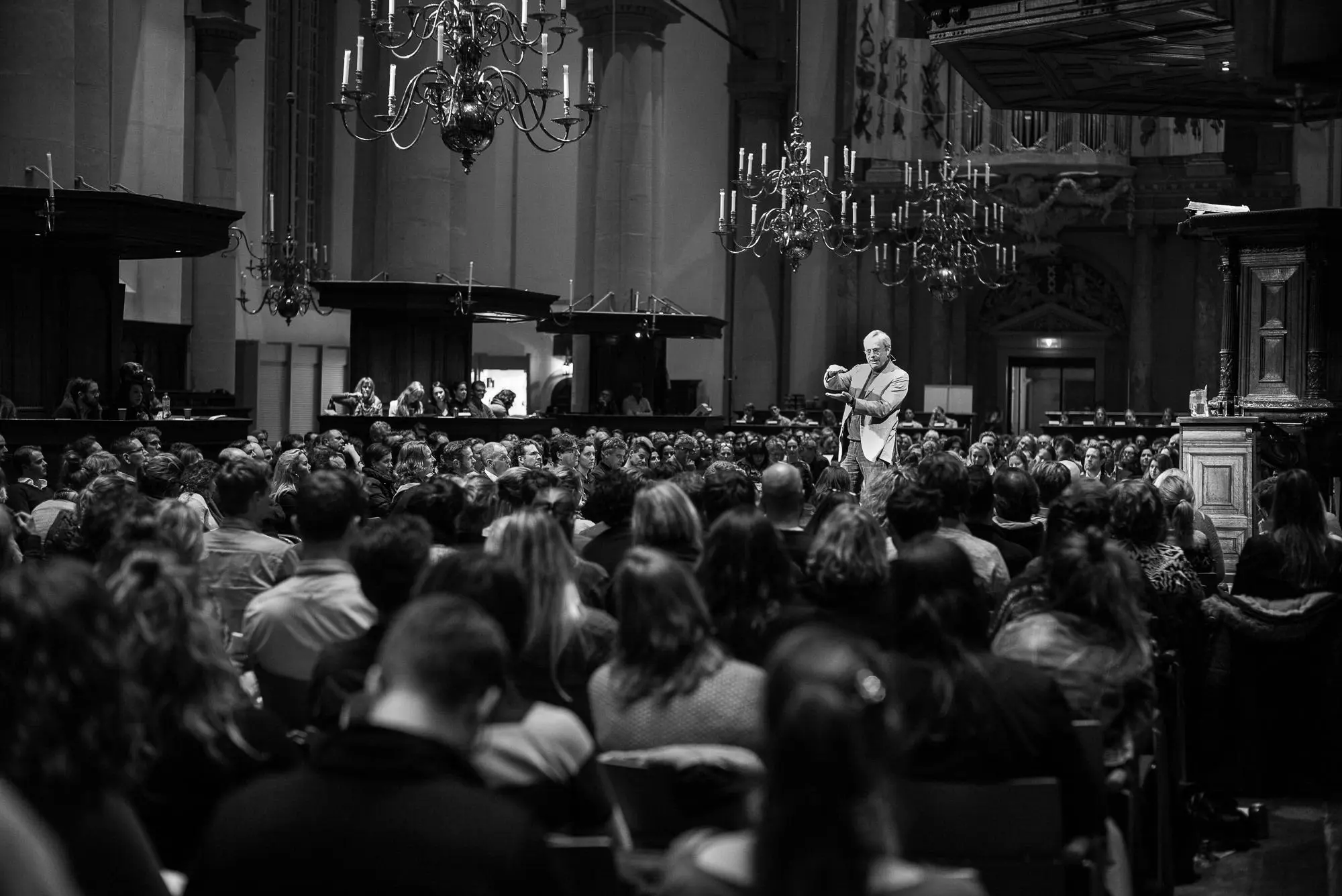David Allen Co’s CEO Reflects on Holacracy
Excerpts from a 2013 conversation with former David Allen Co. CEO Mike Williams.
Excerpts from a 2013 conversation with former David Allen Co. CEO Mike Williams.

The David Allen Company, known for its revolutionary Getting Things Done (GTD) method, is a California-based global training and consulting company. It is widely considered an authority in the fields of organizational and personal productivity.
In 2011, the company adopted Holacracy. They are currently one of its most vocal supporters.
These are excerpts from a 2013 conversation with former David Allen Co. CEO Mike Williams.
From 2006–2010, the David Allen Co. was going through a transition as a small company trying to grow. Around 2010 David Allen returned as CEO to help redefine its vision of success. Around the same time, he met Brian Robertson at a Conscious Capitalism conference. They immediately struck a chord with each other.
The idea that an ‘operational’ organization system could help companies grow and succeed, similar to what GTD had done at the individual level, held great resonance for David.
I think David saw within Holacracy a system that would allow people to have authority, make decisions, and act on their own accord to do what is right for the business and the customer — while clearly specifying that back into roles and accountabilities in order to help the company grow and achieve its purpose.
In 2011, David wanted to bring in a new leader for the organization, and he approached me. Having spent over 20 years in the healthcare industry with larger companies, I was then with General Electric and ready for a change. My ideal scenario was a smaller organization doing really good work. The fit seemed right. As we talked, David brought up Holacracy; it was so important to him that he baked it into my employment agreement.
Once a company adopts Holacracy, it’s almost like being acquired by a different company. These new rules are not for everyone. You have to decide, are you in or out? Once you self-select in, you have to learn the game and become the best player you can be.
My contrast point in comparing Holacracy is what I was used to in other companies, which was probably similar to the David Allen Co. prior to implementing Holacracy. You have a hierarchical chain of command. As the CEO, you say something, reach down into the organization, and say in essence, ‘Make it so.’
Contrasting before and after adopting Holacracy, there’s a bit of deprogramming you have to do to encourage people to step into their accountabilities.
Many times they are used to the pattern of being told what to do, and they suddenly hear, ‘Now it’s up to you to consult, analyze, and execute — it’s your authority, and as a sensor of the company we expect that of you.’
There’s a conscious change in behavior that needs to become less hidden and more explicit. There’s a transition period that people have to work through. Holacracy is very dependent upon having people in the right roles who are self-motivated and can act.
One of the things that Holacracy brings to the table is rhythm and structure. You show up and practice within a solid framework. Having the rhythm be consistent at every level of the organization removes a lot of thinking about the meeting, like how do we have it, what’s the purpose, and what’s the outcome. It simply becomes part of the cloth, part of the fabric.
You arrive at a governance meeting. Everyone knows the rules; they’re well-defined. Those patterns start leading people to study what’s in the structures.
You can use any tool in strategic or non-strategic ways. Holacracy is very much garbage in, garbage out. If you program it to focus on lower value-add stuff, then that is what you’ll achieve. If you focus on higher value stuff, then more meaningful actions and results will come out on the other end.

Recently, we reorganized our company using Holacracy. Originally, we were structured as departments. Over several months, it became clear that some natural value streams within our company were getting clogged up because of how they were structured. Work was not flowing. It was ping-ponging off the different departments.
We restructured our organization into three value streams with a clear customer at the end of each. We now use the structure to help push work through the value streams to get to the customer with fewer handoffs and touch points. Before, we had questions on who has authority on the profit and loss; now it is crystal clear.
We changed the structure, yet the meta-framework never changed. When we implemented the new structure, many people changed circles and roles, and some of the people around them changed too, but the rhythm stayed the same.
We did the re-org over two weeks with the input of the whole team. Everyone could integrate tensions. Done.
With that kind of restructuring in a ‘command-and-control’ organization, it takes longer. You have more politics. Holacracy brings less politics to the conversation because the rules define the process and people’s objections can be heard and integrated.
Metrics, coming from GE and that kind of world, are an output of a process. You have different processes within the work that you do which have inputs and outputs.
With Holacracy, you can still project dates or deadlines, but it’s done less from a predict-and-control perspective, and it’s not hard-coded.
Holacracy drives you into the DNA of what makes up a metric. The hidden part is workflow, which doesn’t necessarily jump out in a meeting. I think it’s a fabric that you have to weave together.
Before ‘onboarding’ comes the hiring process — probably one of the most critical processes of the business. A good hire will bring good results to the business and a bad hire, frankly, is costly. It is so important to make sure we have the right selection criteria.
We worked to identify key competencies in individuals to help determine if they are a good fit for the organization. We defined ten of them that we use in our interview process. This is helping us bring people into the company who are a better fit.
With respect to the onboarding, we have an onboarding procedure that introduces people to Holacracy — the basics. The real work begins in the tactical and governance meetings. We also have an ongoing group where we share learning and questions. We’ve had situations where tensions could have been resolved through the normal course of business, but people were not showing up at meetings. This goes back to the notion of being acquired by an organization and the different rules. You have to re-enlist.

The work of the organization actually gets done with the individual — on what we call in the GTD methodology the runway level. Someone has to choose to do the action. When you hop up into a tactical meeting, you integrate as a team.
What I really like about Holacracy is that it brings the structure to the team intersection level, and institutes a rhythm where people can recalibrate and then have that inform their own work.
Ideally. When that works, it works well. It can run astray if people forget about the work, and just play the game of Holacracy. You can show up and throw anything into the system and take time processing it. I hope people bring high quality input into the system, so we can move the key things forward for the business. For me, it all comes back down to integrating the individual work.
The structure of the tactical meeting is beautiful, and you can fine-tune and adjust along the way. Similar to a trek through the wilderness, the tactical meeting helps ensure that we don’t get too far off course.
I mentioned how we restructured the company. Holacracy made that a very smooth process.
As a result of that change, we increased our visibility to key company information and metrics. The change to this new form is raising new questions around growth, underlying business assumptions, revenue and costs. It also pushed the answer to these questions further down into the organization. I view the increase in questions and pushing the decision-making authority down as positive markers.
The GTD method and Holacracy borrow on a lot of the core principles and good behaviors.
In GTD methodology, we have the five phases of work.
The ideal state for me would be that people are always trying to choose the highest value thing for themselves and the business, and let these structures help in that decision-making process.
To learn more about self-management, join a community of pioneers and check out our e-courses → Self-Management Accelerator